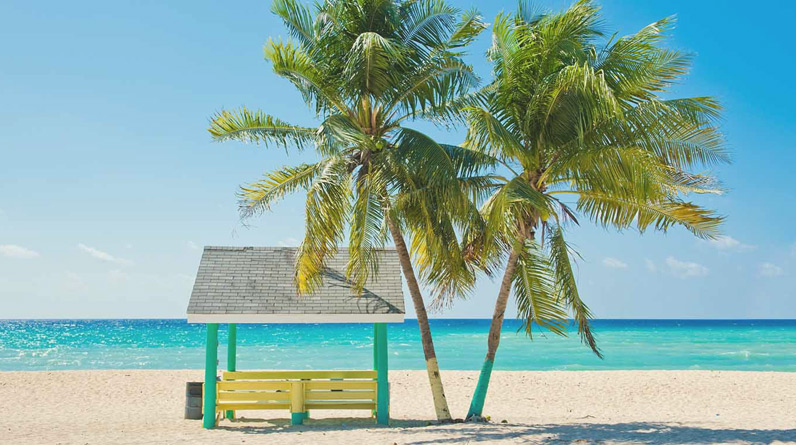If your Cayman Islands vacation plans involve spending much time on or in the water, it’s important to understand fluctuating sea temperatures. This can help ensure you have a comfortable and safe experience.
The off-season, from November to mid-April, offers lower prices and thinner crowds. However, the summer brings hot and humid weather with a higher risk of rain and hurricanes.
Spring
The Cayman Islands is a great destination at any time of year. But the best time to visit is when the weather suits your needs.
The spring months of March and April perfectly combine warm weather, comfortable seawater temperatures, and low rainfall. Visiting in the spring is especially good for travelers looking to avoid the peak tourist season but still want to enjoy the best weather conditions.
While there isn’t a “bad” time to visit the Cayman Islands, the rainy season runs from June through November. This is the prime tourist season, with hotel rates and airfare at their highest.
This is also the time when hurricanes can hit the Caribbean. The Cayman Islands are far enough west to escape most major storms, but watching the weather this time of year is always a good idea.
The best months to visit, depending on the climate in the Cayman Islands are May, June, July, and August. These months offer a great balance between sunny days and cool evenings, ideal for those who want to relax on the beach or take advantage of the many other fun things in the Cayman Islands. In addition, the cooler temperatures help minimize mosquito problems.
Summer
During the summer months of May to November, the Cayman Islands are extremely hot and humid. Visiting during this time is not recommended if you plan on doing any outdoor activities. During the rainy season, there is also a chance of encountering hurricanes, making it possible for you to get caught in a storm.
For these reasons, many tourists only visit during the summer. Nevertheless, it can still be a good time to visit the islands. The temperatures are slightly cooler and less humid than during spring. This makes it a great option for people who want to escape the winter cold in northern countries.
The fall months of October and November are a little colder but still pleasantly warm, making them an excellent choice for people who want to experience tropical warmth without the heat of the summer. There’s still a high chance of rain during this time, but it is significantly less frequent than in spring or summer.
The Cayman Islands have experienced a rise in average temperatures over the past few years. According to the National Weather Service Director John Tibbetts, this is likely due to global climate change and will continue to affect the islands in the future. This trend will have several repercussions for the island, including higher electric bills, heat stress on plants and wildlife, and an impact on the water supply.
Fall
Visiting the Cayman Islands in late fall is not recommended because it coincides with hurricane season. Although the islands are far from active hurricane paths, they can experience storms from nearby tropical systems and their associated rain. This can make it difficult to enjoy some of the outdoor activities that are available on the island. If your trip involves flights through cities like Houston, Miami, or Tampa, your flight may experience delays due to storms in those regions.
The best time to visit the Cayman Islands is in the winter, between November and April, when temperatures are milder and less humidity. However, this is also the peak tourist season so prices will be highest.
The hottest months in the Cayman Islands are June through September, and it can be challenging for some visitors to cope with the intense heat and high humidity levels. While it is possible to travel to the islands during these months, it is best to be prepared for extreme weather conditions and bring plenty of water and sunscreen. In addition, it is essential to have insect spray in your luggage to combat the presence of mosquitoes. It is also important to carry a sunhat, sunglasses, and protective clothing to minimize the effects of the sun.
Winter
The Cayman Islands have a warm, tropical marine climate, and temperatures are warm year-round, but the humidity can be oppressive for some expats. The best time to visit the Cayman Islands is in winter, from November through April when it is dry and the temperatures are not as hot as in summer.
During the winter months, there are many different things to do in the Cayman Islands. There are beautiful beaches to enjoy, fantastic cultural experiences, and amazing food to experience. In addition, the weather is perfect for relaxing on the beach or swimming in the ocean.
There is also a little less rain in winter than in the summer. Occasionally, the islands are hit with cold fronts from continental North America, which can cause brief periods of rain. Still, they bring less precipitation than they do during the summertime.
The worst time to visit the Cayman Islands is during hurricane season from June through November, when winds and rains can make exploring the island difficult and unpleasant. Traveling to the Cayman Islands during this time is also expensive because of higher insurance premiums. However, if you can brave hurricane season, there is still plenty to see and do in the Cayman Islands. If you must visit during hurricane season, ensure you are well-prepared with adequate insurance and supplies.



